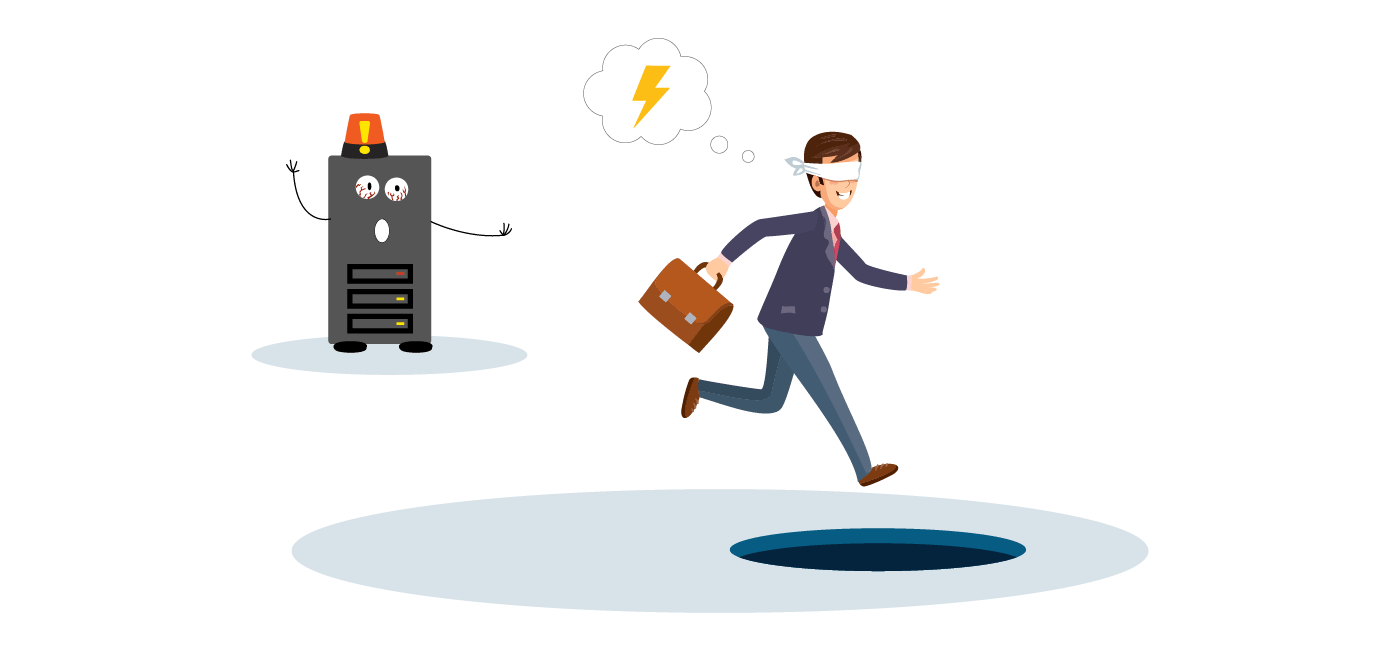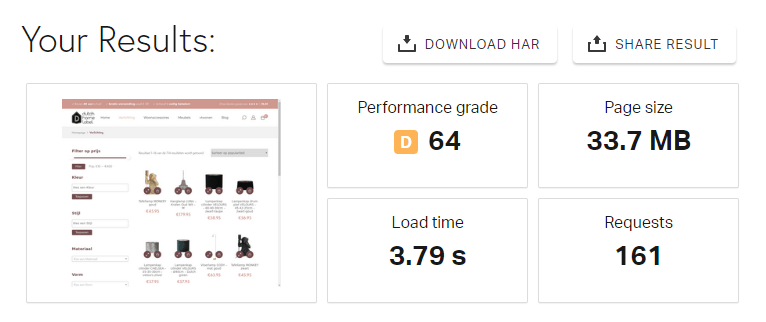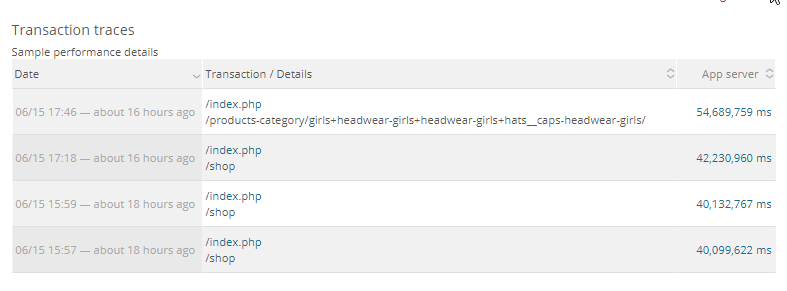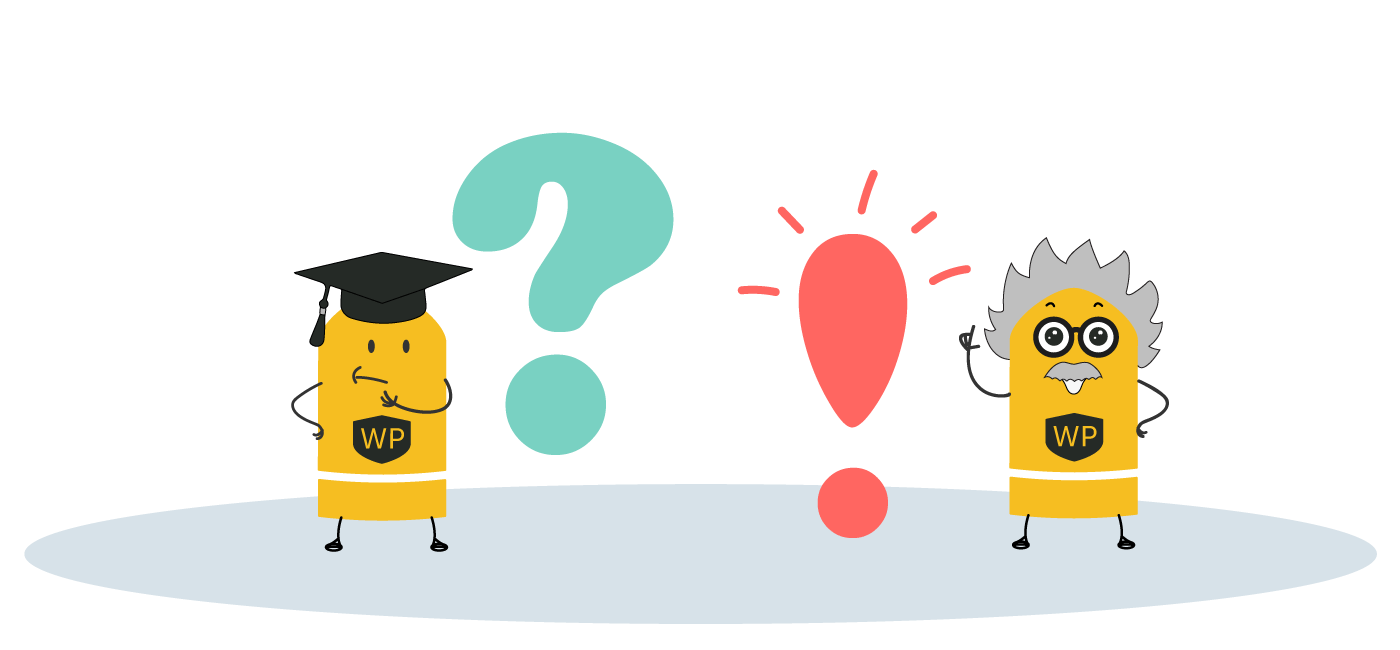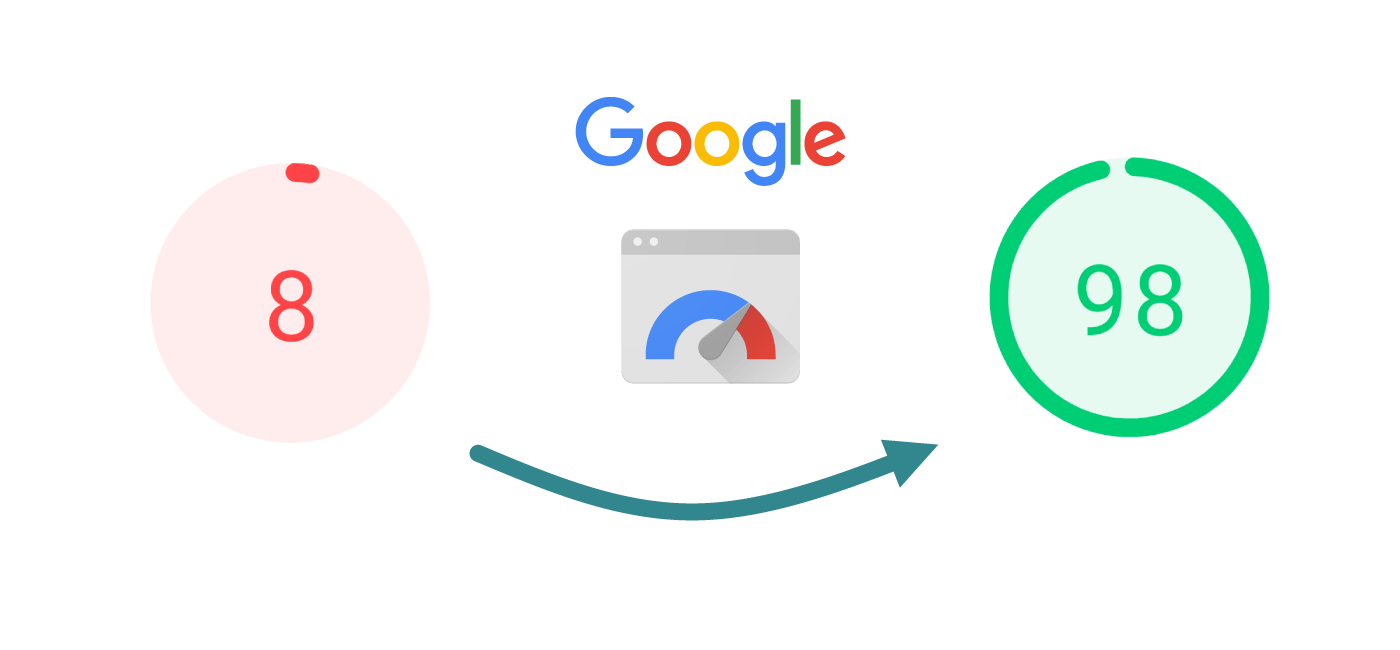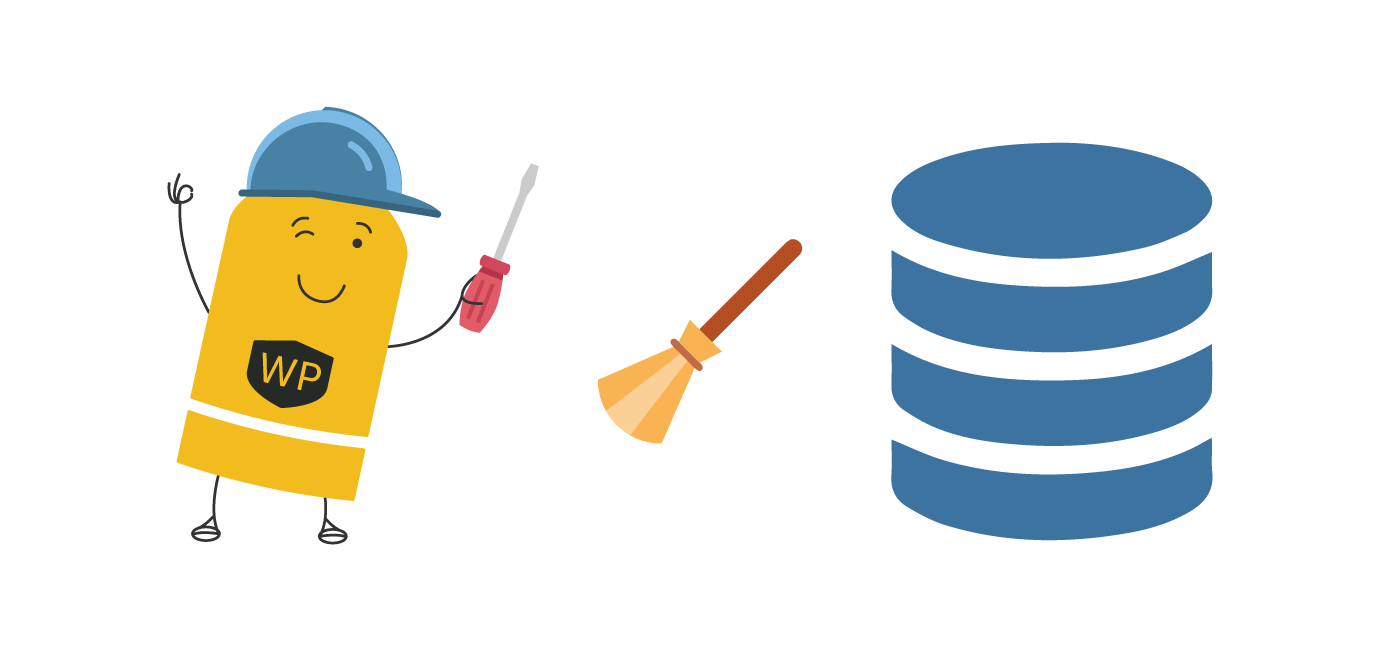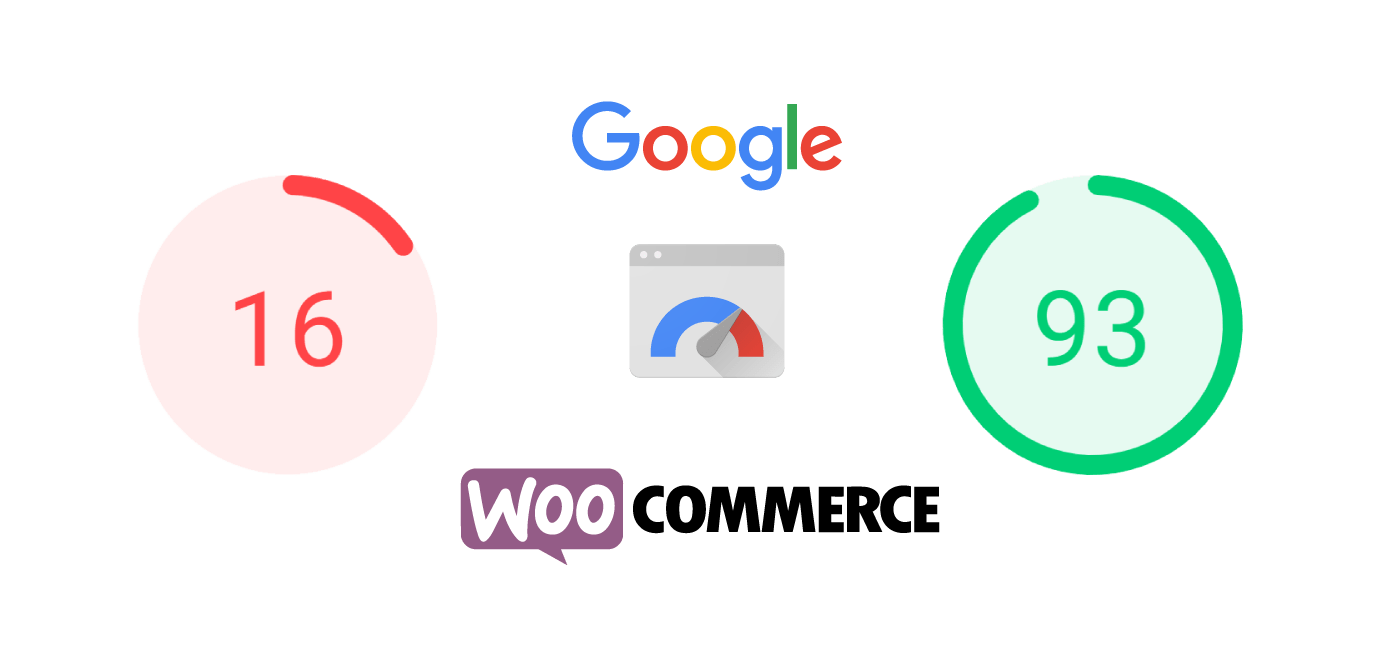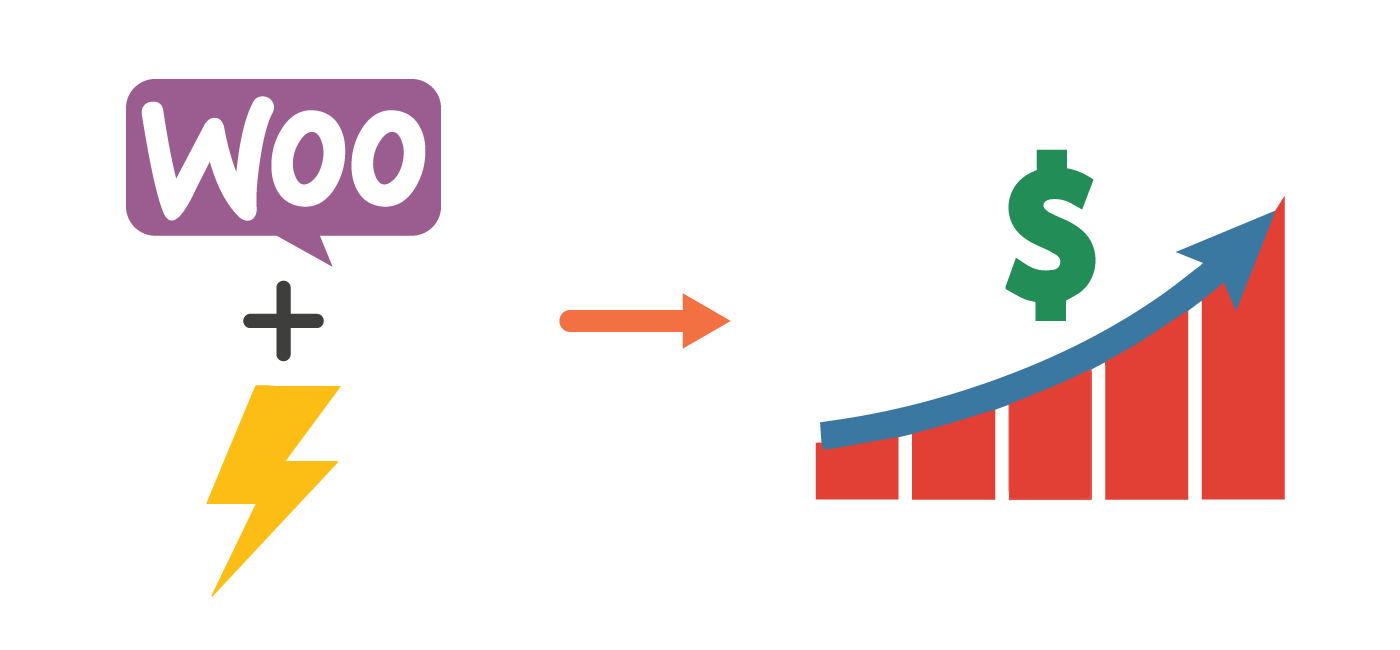Your WordPress site is still terribly slow. You have spent hours, weeks, or months trying to make your WooCommerce store fast and it is just as slow as when you started?
Maybe it’s even slower!
Have you lost count of how many articles and blog posts you have read about how to speed up your site only to end up with no meaningful results?
If this sounds like your situation, you have probably fallen into some of the common WordPress performance pitfalls. I see these every day with you awesome clients from your favorite WordPress freelancing platform.
Performance is an incredibly loaded term and can mean about 50 things when you say “my website is slow”.
Due to the epic amount of blog articles out there using their own definition of speed, people fall into a state of confusion. Often using the wrong tool or approach for fixing their performance pangs.
Here are some of the most common WordPress performance pitfalls we have seen working with clients over the last few years.
Our hope is this will eliminate some confusion and help your site and you find the right path to performance 🙂
You Don’t Have Enough Hosting Horsepower
I get lots of clients saying “the server isn’t the problem, we have 10 CPU cores and 16 GB of RAM”. They are usually talking about virtual cores and not physical cores which are very different (but that is for another post). Most clients are unaware that virtual CPU cores are not created equally.
I have seen sites on a 10 vCPU core cloud VPS solution with 16 GB of RAM performing terribly compared to a 1 vCPU and 1 GB RAM VPS on another hosting provider. Furthermore, physical CPU cores generally are more powerful than their virtual counterparts if the underlying hardware is the same.
Do not be fooled by WordPress host marketing, there is far more to hosting quality than just CPU cores and RAM! Like the power of the hardware (a server from 2020 is going to outperform a server from 10 years ago ceteris paribus – all things being equal). CPU cores and RAM are generally just a marketing tactic to trick you into believing you are getting more value than you actually are – please don’t fall into this trap!
To avoid this common pitfall, make sure to hire a professional to help you do proper testing on the host with the appropriate methods and tools.
One client shared with me that this same marketing trick has been used in the photography industry for years – more megapixels automatically mean a better camera and photo quality which is not always the case.
You use an Overengineered Hosting and Infrastructure Setup
You would not believe how many users I see having 5-10 servers when they really only need 1 or 2, maybe 3. Most sites do not benefit from load balancers, remote database servers and other advanced configurations. In fact, most often I see these overengineered setups completely misconfigured which actually causes performance issues. It is tragically ironic!
Most often I see this on AWS or Google Cloud because the site owner read some blog posts that hype these unnecessarily complex setups. Site owners then think “Oh, if I copy that setup, my site will magically be fast” – news flash, it won’t and probably will be more expensive in terms of monthly costs and recurring maintenance fees to monitor it and take care of it properly.
Here is a recent example from a client who was convinced they had an Enterprise-grade hosting setup. This is a very high traffic store site with 8 servers and their flagship product page was taking 10 seconds to load. Based on other case study data, this was likely costing them a hefty amount of conversions and revenue. In fact, it probably still is since they never got the problem addressed because they are convinced nothing is wrong with their hosting and infrastructure configuration.
That online WooCommerce store has over 100,000 active monthly subscriptions to their products, imagine how many more loyal customers they would get if product pages were not taking 10+ seconds to load!
Seriously, what kind of Enterprise level configuration leads to key pages with a 10-second TTFB?
You Blindly Trust your Host
I rarely, if ever have seen a host take responsibility for performance issues for sites on their servers. It seems like most hosts are given a manual on how to skirt responsibility and pass the buck to plugins, themes or database bloat. I call it the finger-pointing game and it is not fun at all – it’s akin to gaslighting and can make site owners go insane!
Every day I see clients being told that they have a database issue or slow code problem when really the hosting is the primary culprit of the site’s slowness.
One of the first troubleshooting steps we take in diagnosing speed issues is putting the site into a well-configured environment that can accommodate the site. If it is still performing poorly then we know that a deeper troubleshooting session is required using performance monitoring tools to hone in on the problem and find the culprits.
Improper Page and Site Speed Testing
Many users will show me performance tests from tools like GTmetrix or pingdom claiming “look everything is fine!” They also test their site from their own browsers exclusively claiming “it feels fast” and forget to test multiple browsers, mobile devices and connections. In your own browser, many items are cached so when you only test the cached version of your page you can fall into a false sense of confidence in the speed of your pages.
If you care about your visitors and their experience, you absolutely must test your site in many, many ways using a variety of tools and techniques to cover your bases. Nowadays there is a plethora of performance metrics that matter like Time to First Byte (TTFB), Total Blocking Time, First Contentful Paint, Fully Loaded Time, Largest Contentful Paint and more.
If you have a WooCommerce site or some other type of e-commerce like Easy Digital Downloads then it is absolutely critical that uncached responses are fast. As soon as a user adds an item to their cart then the page cache—which may be masking your performance issues— is bypassed and the potential customer gets a slow experience :(.
Now you end up with a customer who was willing to pay you and is experiencing slow loads as they browse around and shop further or try to check out. How angry would you be if you were punished with a slow site experience after you add an item to your cart? Personally, I get so frustrated I just leave the store like most shoppers do!
Ignoring Server and its Configuration
People do the jumping hosts dance a lot when trying to solve speed problems on their site. I have had clients who have been on 4 different hosts in the span of a month, how exhausting!
The server configuration is basically always ignored. Nobody checks to see if the key configuration files are tuned correctly so the right amount of resources are available to the site in question.
This pairs along well with people who complain about their slow site despite having 64 CPU cores and 128 GB of RAM for their simple blog.
Combined with clients looking in the wrong place and using the wrong tools to measure slowness the confusion is massive.
I had a client on a hosting configuration with very specific limitations on resources and he had no access to the configuration files on the server – there was no chance this site would ever perform well on that host!
Luckily the audit we did helped reveal the true performance issues and find an appropriate server home for his learning platform teaching users about Silicon Valley startup culture.
Believing Performance Optimization is 1 Plugin and Done
Thinking you are done optimizing your site’s speed after installing 1 plugin and following a wizard. This is becoming more common because it provides a smooth onboarding. However, it also gives a false sense of completion of optimization from these plugins. Many plugins nowadays like to use checkboxes for various operations that are supposed to speed up your site. This is a great user experience, unfortunately, it oversimplifies the optimization process.
Do not be fooled by ticks saying “ALL DONE” and the color green or other fancy graphics. If your site is still slow despite the checkboxes and green notices you see from a caching or performance plugin, you could very likely benefit from an audit to find out what is actually slowing down your website.
Ignoring WordPress Performance Expert Advice
Thinking you know best because you read a blog post, you don’t know what you don’t know. Amount of time wasted looking in the wrong place or barking up wrong tree is staggering, so much wasted time, thinking you know the problem – this happens a lot. It affects otherwise intelligent clients who are just not experts in the performance or web development world. It is an interesting cognitive bias from a psychological perspective as well.
Clients want to be right about what they think the performance problem is for one reason or another – maybe to boost their ego or to try and save money or to feel self-sufficient in their website troubleshooting skills? There is an unjustifiable overconfidence to their convictions about what the problem actually is which delays progress.
Whatever the reason, it is often a huge waste of time and money. I see clients all of the time convinced they need a database cleanup when really their theme and plugin combination is destroying their user experience. Similarly, clients often are convinced that their hosting is perfectly configured and are unwilling to move.
One client had come to me and was experiencing slowdowns in his store which were seemingly random. He kept insisting the bottleneck was in the database but based on our analysis, it was actually his marketing tools that were causing the site to slow down when 100 users were on the site at once. This went on for 3 months costing him significant amounts of sales, increased abandoned carts and having a low conversion rate – try not to make the same mistake!
I told this client that their site and server was not configured to handle paid traffic from Google Ads or Facebook Ads. I predicted the WooCommerce store would get at best really slow or at worst start crashing and throwing those awful 502 bad gateway, 503 backend fetch failed or 504 gateway timeout errors and the ad investment would be a huge waste, not providing the ROI he was anticipating. Sure enough, that is exactly what happened 🙁 – the worst part is it was totally avoidable!
Fortunately, that story has a happy ending, the client hired us to help him finally. We did a multiday audit to stabilize the site and add server-level configurations to help handle the ad traffic.
The performance world has a huge degree of objectivity, you cannot wish the problem to be what you think it is or hope it to be – that is not how performance optimization works, unfortunately. There are processes like database queries and PHP functions that take time, and time we can measure to reduce any doubt. There are servers that can be underpowered and slow everything down.
These factors are not up for debate. They cannot be wished into reality because they exist in physical and digital space. Convincing yourself you are sure what the problem is without a professional opinion and audit is a recipe for disaster and plenty of time-wasting – often costing a lot more than just money!
Focusing on the Wrong Speed Issue
Take a look at this image from pingdom from a client. Guess what his concern was?
“We are making way too many requests” – maybe, but your site is the size of the titanic and you are expecting it to run like a speedboat. Maybe it can perform like a speedboat if we unload the 33 pounds of unnecessary cargo weight 😉
This happens with Google PageSpeed Insights too – it matters but it is not all that matters for performance and conversions.
Clients understandably are hyper-focused on what Google says. It matters so much that they often do not see the forest for the trees. Every week clients come to me saying “I have to fix my PageSpeed scores”. Then I run some other tests and notice they have a server response time of 8 seconds (see what server response costs your SEO and conversions).
Here is my response:
“This is like wanting to put lipstick on a pig, it is still a pig!”
It is similar to planting a nice flower arrangement in your front yard while your house is on fire. We need to fix the real performance issues related to your site’s goals first.
Here is another site where the client was worried about his GTmetrix scores claiming they needed to get A scores on PageSpeed and YSlow. We always like to take a holistic view of performance to get the whole picture. Luckily this client’s host supported an application performance monitor called New Relic so we could analyze the data there.
In this screenshot, you can see that the /shop page of his WooCommerce site was taking 40 million milliseconds to load!
We had to do the math on that to find out how long that was in human-friendly waiting time.
40 million ms is more than 11 hours – are you kidding me!? GTmetrix is the least of your concerns. If your website was a house, the basement would be flooded and the top floor would be engulfed in flames – we can help you prioritize your performance issues and get your site back on track.
We find that many clients also focus on “what they want” in speed rather than “what they need”.
What you need in terms of performance is what will help your visitors or your business goals.
We believe a proficient website performance expert will help you focus on what you actually need instead of just what you want – hopefully there is some overlap!
An “expert” who agrees to give you just “what you want” in site performance that isn’t “what you need” is more interested in getting paid than actually helping you.
If you work with us we will always prioritize what we believe you need to improve the performance of your site to help achieve your goals.
What you need is generally more important than what you want. This is where experts can help you tremendously.
Trusting the Wrong WordPress Expert Advice
Many “experts” around site performance are technically incorrect about many of their claims. Their suggestions can lead you to a host of new problems for your slow site. I have had more clients than I can count go through multiple agencies and freelancers who claimed they could fix their performance issues.
Many of these clients would have saved a lot of money and time if they had just trusted the right expert from the beginning. Often it becomes more expensive to correct what other agencies and experts have done so you really are better off finding the right performance specialist from the beginning!
Wishing Performance Optimization is a Checklist
“Performance optimization isn’t a checklist, it’s a mindset” – Robin Scott.
Performance is not just what you want it to be and how you hope or want it to be solved. There are rules and principles to follow as part of a healthy website performance strategy.
If you focus on just the site-build or just the server or just performance tests means you are likely to fail – a multifaceted approach often yields the most impressive results. Hyperfocusing myopically on one component is destined to make you spin your wheels wondering why your site is still performing like a potato.
The website performance ecosphere has changed dramatically over time. Performance optimization requires a full picture in order to be successful. We need performance strategies to help achieve our goals.
A parochial approach that only focuses on one tool or singular aspect of performance is usually destined to fail. In these modern times, the best approach is a multifaceted, holistic approach to website optimization to provide your users and Google (if you care about organic traffic) with the best experience your site can provide.
Very often I get clients obsessed with Google PageSpeed scores. One can argue that Google PageSpeed is important for measuring a good user experience but it is only one aspect of performance.
The number of users I have seen who are focusing on their poor Google PageSpeed scores when really there is a slew of site, hosting and infrastructure problems they need to deal with first is alarming.
While Google PageSpeed should be on your performance checklist, it is absolutely not the only item that matters on that list!
Forgetting to Budget for Website Optimization
How much of your website budget did you set aside for performance?
If you are like most people, probably $0. For whatever reason, performance seems to be something website owners do not think about at first and only worry about last.
Sadly this is typically after they have already spent thousands of dollars and weeks or months working on their site. Then they run a speed test somewhere and find out the performance is abysmal, red everywhere and F grades which bring back flashbacks from school, the internet has told said flat out you’ve failed (to have a performance budget).
Performance will not magically take care of itself. It is a massive waste of money to spend on ads to a site that has serious speed or stability issues.
There is no point in designing a beautifully rich website if it performs terribly – nobody will want to use it.
Note that website performance budget also has another meaning where you decide on a performance score you want. Say you want 90 on Google PageSpeed. During development you then make sure that any changes you make do not push the score below the 90 threshold or you would have exceeded your performance budget.
For this blog post’s context, performance budget means allocating dollars and cents (also sense!) to your website’s life to ensure it runs fast to make your users happy.
Please don’t make the assumption and mistake that performance is somehow a given and something that will sort itself out, most often it will not and it will cost you in one way or another.
For WooCommerce site owners we recommend you set aside 5-10% of profits for site optimizations annually.
The same principle applies for affiliate sites. If you want to stay competitive in the eyes of Google then you should save 5-10% of your earnings for speed optimization maintenance each year.
“Performance Optimization is Expensive”
Plenty of clients think performance work is expensive and totally ignore the ROI of quality website speed optimization.
Really your slow website is expensive! Performance work pays for itself (see case studies) in spades for most websites.
Your slow website costs you so much more than money. Performance is simply not a savings worth making if you care about your website and online presence.
Slow sites can also affect how your visitors perceive and trust you. Many users believe a slow website demonstrates indifference, apathy, no diligence and a lack of technical sophistication. Nobody wants that!
You Picked the Wrong Host
This I see every day and it is heart-breaking. Clients typically spend a lot of time researching hosts. They read review after review, ask friends and colleagues until they finally decide. They are convinced they have made the right choice only to discover their website performs like a turtle when they take it live and visitors start pouring in from Instagram pages or Facebook or Google ads.
I have a reality check for you – there is no perfect host. If there was it would be the only host anybody would ever recommend. There is a close-to-perfect host for your site which depends on how it is built, the channels that drive traffic to your site, its overall processing requirements and business goals.
Paying more for your host is also not always the best solution performance-wise, throwing resources at the problem incidentally is yet another performance pitfall!
Throwing Resources at the Slowness
One of my favorite clients started his site on a $30 per month server. When I met this client they were on a $600 per month server. The site had gotten slower and slower over time but instead of getting an audit to find out why, he just kept resizing his server to help mitigate the slowness.
Once we finished addressing all of the server configuration, code and database issues. The site was back on a $30 per month server and it was faster than it had ever been!
He had spent thousands of extra dollars on a larger server he didn’t even need.
Choosing a Slow WordPress Theme
Picking a WordPress theme based on aesthetics and how many features it has happens every day. Focusing on theme prettiness is pretty much a guaranteed way to start off with a shaky foundation for your site if you care about performance.
Picking themes based on the number of features they offer is also a really bad idea. Most of these features bundled in themes today using the “kitchen sink” approach which generally means the speed of your site will suffer – most of these extra bonus functions belong in plugins, not the theme!
Hoping a Plugin Will Answer Performance Prayers
Sadly there has been a trend with performance plugins especially ones that label themselves as “cache plugins”. They like to bundle 5000 features together instead of focusing on just a few aspects of performance and doing them well. Instead, they add every feature under the sun for marketing purposes or to add perceived value.
This is like when you get bundles of cheap garbage products on Amazon where sellers throw 10 unnecessary low quality-related accessory items to the main item you want. Instead, you are better off investing in the specific well-built product you actually need!
I think this stems from plugin paranoia where clients are fearful of having too many plugins installed because of myths like “too many plugins make your site slow” – which should really be “too many low-quality plugins will make your site slow.”
Thinking More Performance Plugins Means a Faster Site
“The more performance plugins I install the faster my site will be!”
Every day I see sites with multiple “performance” plugins that are actually slowing the site down and are terribly misconfigured. It is extremely common to see multiple minification plugins, 2 or more “caching” plugins that are doing the same thing (i.e. performing the same function) causing performance problems and wreaking havoc! – the irony is very strong here but sadly I see this all of the time.
Please don’t make life harder for yourself, more is not always better. Always choose your plugins with care and test thoroughly.
Believing WordPress Requires a Powerful Server
“I need a powerful server to make WordPress fast.” – nope.
The number of times I have seen my clients say “But I’m on a super beefy server! It has 32 CPU cores with 64 GB of RAM so it can’t be the server” is mind-blowing. Meanwhile, it is running stock cPanel which is like buying a Ferrari and letting your Grandma drive it in the slow lane – we need to break you out of the slow lane and find a qualified driver!
To top it off, none of the key server configuration files have been tuned at all. So in most cases, these adequate server resources are not even being utilized so it is literally flushing money down the toilet for power you do not need! This wastes a considerable amount of cash long term. Money which would be much wiser to invest in improving the site performance with carefully considered choices.
Forgetting the Database!
The WordPress database should be clean so the site can run fast. This is often the last place people will check if they ever do at all. Most plugins only do a very basic cleanup and are unlikely to make your site faster compared to a deep thorough manual cleanup!
Security was Overlooked
Sometimes your performance issue is actually a security problem. When your site is vulnerable to security exploits, attack vectors are hammered by bots and malicious networks which can exhaut your resources so your website cannot perform its regular functions at normal speeds.
To top it off, some security plugin claiming to protect your site actually create performance issues!
Oversimplifying WordPress Performance
In psychology, we have a term called reductionism. Reductionism is when you reduce a complex phenomenon like happiness to a simple cause like serotonin. Happiness is much more than just the amount of serotonin in your brain so this would be considered reductive.
In performance, we see similar cognitive oversimplifications.
“Just use this host and all of your performance problems will go away.”
“If you add this plugin it will fix all of your speed issues.”
It happens, but is pretty rare like unicorns and centaurs. While switching hosts or adding a plugin can help address major performance issues, this is usually just the beginning of your performance journey.
Experienced performance specialists know that the best results come from optimizing every aspect of the site from the infrastructure and hosting to the theme, plugins and database!
This in-depth multi-pronged approach follows the Principle of Marginal Gains. This principle was popularized by Sir Dave Brailsford who helped the Britsh win Olympic medals in cycling after years of consistent failure (see more here). The Brits were so impressed by his approach that Dave was knighted for his services. Elton John was knighted for his music as was David Attenborough for naturalism. The Brits certainly like to acknowledge awesomeness.
What was Brailsford’s secret? Improve every component that increases your performance – even by as little as 1% – that you can and it leads to massive gains. Marginal gains in every aspect of your WordPress site or WooCommerce store cumulatively can have a huge impact on your site speed! This almost always has positive effects on conversion rate, bounce rate and SEO rankings.
The key to avoiding WordPress performance pitfalls is by adopting a holistic view and approach to site speed. Creating a solid performance strategy is the only way to go if you truly care about user experience.
Are you making any of these WordPress performance mistakes? Want some clarity?
